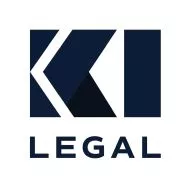In times of business disruptions, such as vacancies in apartment buildings and offices, the number of defaults on commercial mortgages and leases tends to increase significantly – impacting various industries, including hotels and retail stores. For example, in September 2023, 88.9% of CMBs office property loans defaulted upon maturity totaling $672M, while 11.1% were paid off.1 This marked the highest monthly default rate and dollar amount for the year, surpassing the previous peak in April when 51.1% defaulted, totaling $167.2M.2
What is a CMBS Loan?
First, let's start with the basics. What is a CMBS loan? A Commercial Mortgage-Backed Security loan, aka CMBS loan, is a type of commercial real estate financing where lenders bundle commercial mortgage loans together, transfer them into a real estate mortgage investment conduit (REMIC) trust, and sell them as a series of bonds.3 Because banks do not carry CMBS loans on their financial statements, they are able to provide these loans to borrowers at relatively low fixed interest rates and offer borrowers relatively high levels of leverage. Additionally, most CMBS loans are nonrecourse, which means the lender's only remedy is to foreclose on the property and take possession of it.
How Can Borrowers Acquire CMBS Loans?
CMBS loans are offered for income-generating properties, including multifamily units, self-storage facilities, hotels, industrial structures, retail spaces, and office buildings.4 To qualify for a conduit loan, applicants need to request a minimum loan amount of $2 million and seek a maximum leverage of 75% or less. Furthermore, borrowers with a lower net worth or those looking to finance mixed-use properties can also consider CMBS loans. These loans are particularly appealing for investors with credit or legal challenges, as lenders prioritize the financial stability of the property itself.
How Can Investors Acquire CMBS Loans?
Retail investors interested in CMBS debt have several options to consider, as they can invest directly or explore investment opportunities through mutual funds and specialized exchange-traded funds (ETFs) that are centered around mortgage-backed securities.5 By purchasing shares in these dedicated ETFs, smaller investors gain the opportunity to access the stable fixed income returns offered by CMBS loans while simultaneously spreading risk through diversification.
Within the realm of ETFs, there are options also tailored to concentrate on mortgage-backed securities (MBS), which are primarily composed of residential mortgages but may also encompass commercial mortgage-backed securities. These MBS-focused ETFs provide an attractive avenue for retail investors seeking to venture into debt securities. They serve as a means to diversify risk without necessitating a substantial initial investment.
How Does a CMBS Bond Compensate an Investor?
Investors select specific CMBS bonds based on their desired level of credit risk, yield, and duration.6 Each month, the interest payments from the pool of loans are distributed to investors, starting with those investors holding the highest-rated bonds. This process continues until all accrued interest on those bonds is fully paid. Subsequently, interest is distributed to the holders of the next highest-rated bonds and so forth. This payment sequence is commonly known as the "waterfall." In situations where there is a deficiency in the contractual loan payments from the borrowers or if the loan collateral is liquidated but fails to generate sufficient proceeds to meet the payment obligations for all bond classes, investors in the most subordinate bond class will experience a loss. Any additional losses will then impact more senior classes in reverse order of priority.
Footnotes
1. 9 Out Of 10 Maturing Office CMBS Loans Defaulted In September (bisnow.com)
2. Id.
3. A Complete Guide To CMBS Loans | Quicken Loans
4. Conduit Loan in Commercial Real Estate | Commercial Real Estate Loans
5. What Are Commercial Mortgage-Backed Securities? (thebalancemoney.com)
6. CMBS – Understanding the basics | Principal Asset Management (principalam.com)
The content of this article is intended to provide a general guide to the subject matter. Specialist advice should be sought about your specific circumstances.
We operate a free-to-view policy, asking only that you register in order to read all of our content. Please login or register to view the rest of this article.



